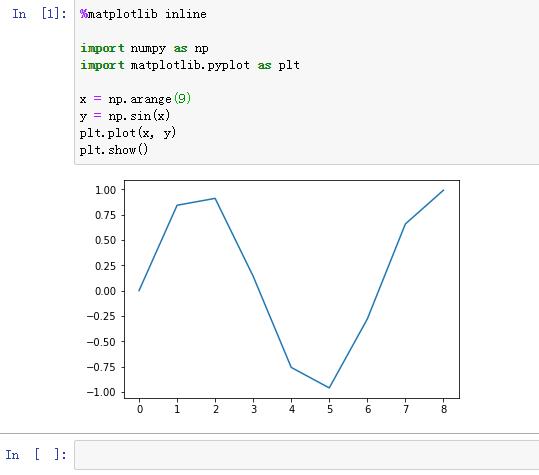阿里云服务器端配置TensorFlow & jupyter
Posted 十点
tags:
篇首语:本文由小常识网(cha138.com)小编为大家整理,主要介绍了阿里云服务器端配置TensorFlow & jupyter相关的知识,希望对你有一定的参考价值。
在阿里云上搭建爬取某信的公众号文章的程序时,发现需要验证码验证,技穷之后考虑做一个验证码识别程序,所以开始在服务器上搭建机器学习平台,
背景,服务器上已经有其他应用在跑着了,所以不想停服,
初始环境:
centos7
gcc
Python2.7
目标环境:
Python3.6
TensorFlow 1.8
(因为可能存在系统问题,所以建议先根据后面的排错查看gcc版本以及其他信息,)
找了找其他人的经验,觉得可以参考这篇的方法,https://www.jianshu.com/p/98f8b55a4191
1、Python3.6
安装Python3.6,这个是之前装好的,没有用anaconda,就是原始安装的,
2、TensorFlow
按照教程的方法,pip安装TensorFlow 1.8之后测试时,发现报错:
/lib64/libstdc++.so.6: version `GLIBCXX_3.4.20\' not found
Failed to load the native TensorFlow runtime。
这里是gcc的问题了,开始找办法,
首先排查一下这里(https://www.jianshu.com/p/4115338fba2d)提到的问题有没有出现,
之后再看,一般出现这个问题时是系统安装了高版本gcc之后没有重新配置系统的超链接指向新的gcc程序,这个问题一查都是全系统搜索找到新的gcc的库位置,重建软连接就行了,一般都这样处理:https://blog.csdn.net/libaineu2004/article/details/77100132
但是我这就特殊了,系统中没有更高版本了,find / -name libstdc++.so.6*之后最高就是3.4.19,没有20,那只好升级呗,
结果:yum provides libstdc++.so.6
之后,查到的跟人家的不一样:
一般的,
Loaded plugins: fastestmirror, langpacks Loading mirror speeds from cached hostfile * base: centos.ustc.edu.cn * extras: centos.ustc.edu.cn * updates: centos.ustc.edu.cn libstdc++-4.8.5-11.el7.i686 : GNU Standard C++ Library Repo : base Matched from: Provides : libstdc++.so.6
我的:
Loaded plugins: fastestmirror Loading mirror speeds from cached hostfile * base: centos.ustc.edu.cn * extras: centos.ustc.edu.cn * updates: centos.ustc.edu.cn libstdc++-4.8.5-11.el7.i686 : GNU Standard C++ Library Repo : base Matched from: Provides : libstdc++.so.6 libstdc++-4.8.5-28.el7_5.1.i686 : GNU Standard C++ Library Repo : @update Matched from: Provides : libstdc++.so.6 libstdc++-4.8.5-28.el7_5.1.i686 : GNU Standard C++ Library Repo : @updates Matched from: Provides : libstdc++.so.6
本来想找个什么办法直接升级到下一版本,但是没找到,怎么升级都报:
Package libstdc++-4.8.5-28.el7_5.1.i686 already installed and latest version
只好手动编译安装更高版本gcc,具体方法看这里:
https://blog.csdn.net/leiting_imecas/article/details/60813164
直接升级到libstdc++.so.6.0.21,升级完就好了,
中途貌似会有个报错,
make[3]: *** [build/genmddeps] Error 1 make[3]: Leaving directory `/opt/mylinux/build/gcc-build/gcc\' make[2]: *** [all-stage1-gcc] Error 2 make[2]: Leaving directory `/opt/mylinux/build/gcc-build\' make[1]: *** [stage1-bubble] Error 2 make[1]: Leaving directory `/opt/mylinux/build/gcc-build\' ...
这时需要升级一下g++,https://www.cnblogs.com/Anker/p/3203402.html
**编译过程非常耗时,我当时CPU100%跑了接近两小时,这样就会挤掉系统中正在跑的其他程序,如果你还部署了其他应用建议再检查下他们是否都还能正常服务,**
之后再Python import tensorflow时就正常了,
3、jupyter,具体方案在这里:https://blog.csdn.net/ys676623/article/details/77848427
这个教程中修改完服务器端的jupyter的配置文件,配置文件中填写的密码应该是ipython给出的那个全部字符串,改完后是这样的:
c.NotebookApp.password = u\'sha1:XXXXXX\'
修改完服务器端的jupyter的配置文件后应该启动jupyter:
jupyter notebook --ip=0.0.0.0 --no-browser --allow-root
此时就已经可以正常在本地使用阿里云上的jupyter了,

就这样了,有其他问题欢迎留言讨论,
以上是关于阿里云服务器端配置TensorFlow & jupyter的主要内容,如果未能解决你的问题,请参考以下文章